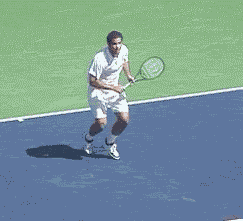
Image: optimumtennis.net
Keefe Gorman is an experienced wealth advisor with Merrill Lynch in New York. Beyond his activities as an advisor and managing director at Merrill Lynch, Keefe Gorman enjoys leading an active lifestyle. He is particularly fond of playing tennis.
Tactics individuals can implement on the tennis court include the serve and volley play. A typical exchange between tennis players involves the server beginning the point and both players remaining at the back of the court until an error or winner has been hit, or until one player can move into the net and end the point with a volley. Once the dominant style of play in tennis, the serve and volley is now used as a change of pace or surprise tactic in which the server immediately moves forward and, ideally, finishes the point at the net within one or two strokes following the serve.
There are a number of components to a successful serve and volley play. For example, a fast, powerful serve can sometimes overwhelm the returner and produce a weak reply that makes for an easy volley. On the other hand, a skilled returner can use the pace against the server and hit a return winner before the opponent has made more than a few steps toward the net. In many cases, a more effective play is a wide, slicing serve or a kick serve into the body, either dragging the returner far off of the court or jamming his racket to prevent a strong return.
The surface of the court can also influence the outcome of the serve and volley play. On a grass court, for instance, balls stay low to the ground after the first bounce. Slice serves are particularly effective on grass, further enhancing the tactic on a grass court. On the other hand, clay courts are less forgiving to slice because they produce high bouncing balls that allow the returner to take his time and measure a perfect passing shot before the server has positioned himself at net.